#Horse Ears
Explore tagged Tumblr posts
Text
sad horse ears

17 notes
·
View notes
Text

First concept of Sana the centaur.
#twst#twst wonderland#twisted wonderland#disney twisted wonderland#twst oc#monster#monster centaur#centaur#horse ears
20 notes
·
View notes
Text
HORSE EARS happy birthday (: @fandomfreakstudios
8 notes
·
View notes
Text

by Elizabeth Johnson-Wold
94 notes
·
View notes
Text

#digital illustration#digital art#artwork#artists on tumblr#digital painting#female#solo#dullataur#monstergirl#bone#portrait#horse ears
2 notes
·
View notes
Text













(Not) an approved use of the Power Of Friendship
#lego monkie kid#lmk#qi xiaotian#sun wukong#mk#six eared macaque#liu'er mihou#monkey king#shadowpeach#monkie kid#monkey trio#stonefruit trio#for when mac inevitably gets fully adopted into the squad and becomes the token introvert#faced on all sides with excited golden-retriever energy. Pray for him#seriously if he and swk ever actually reconciliate it's gonna be SO funny#brace for AFFECTION#plz let them cuddle. cuddle pile#plz i need it#have you SEEN how much monkeys will climb over and sit atop one another???#oh lawd i forgot when i was drawing this that sun wukong is canonically made of stone#imagine getting (lovingly!) tackled by that#celestial monkeys here to remind you that the 'celestial' part is completely dominated by the 'monkey' bit#could monkey king get hit with a case of the sniffles just from horsing around in the rain? probly not.#do i CARE? definitely not#rainy day shenanigans#*inflicts northwest autumn experience upon my faves*#excuse me i meant Fall because it does make you fall right down#its flu season everybody go get ur shots#brought to you by my headcanon that macaque actually likes rainfall#and he definitely likes snowfall
3K notes
·
View notes
Text
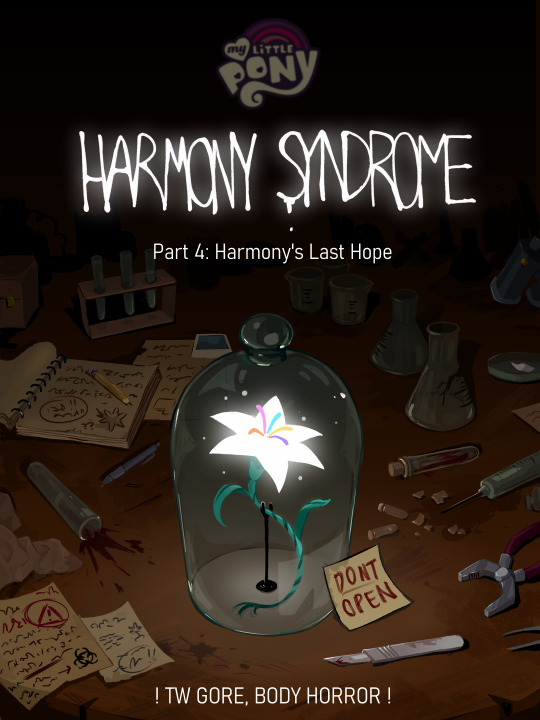
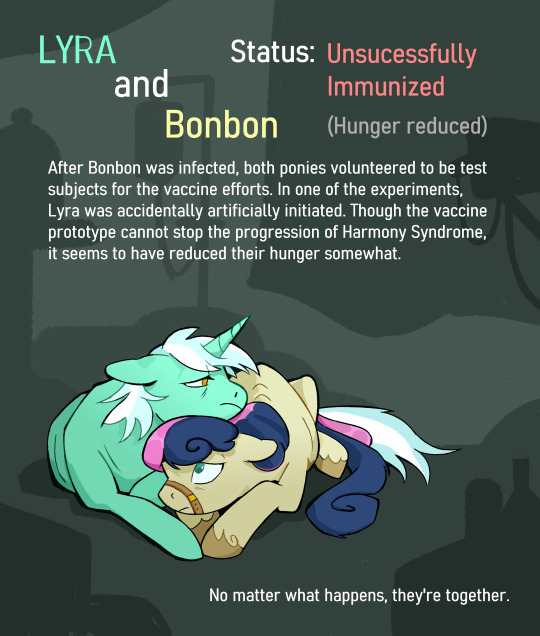
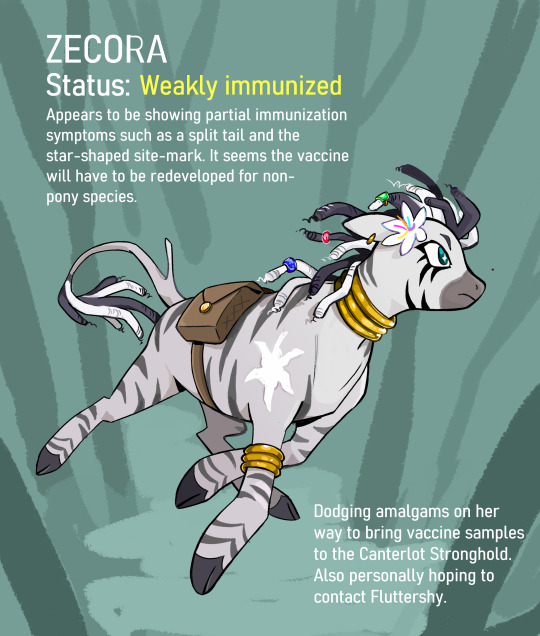
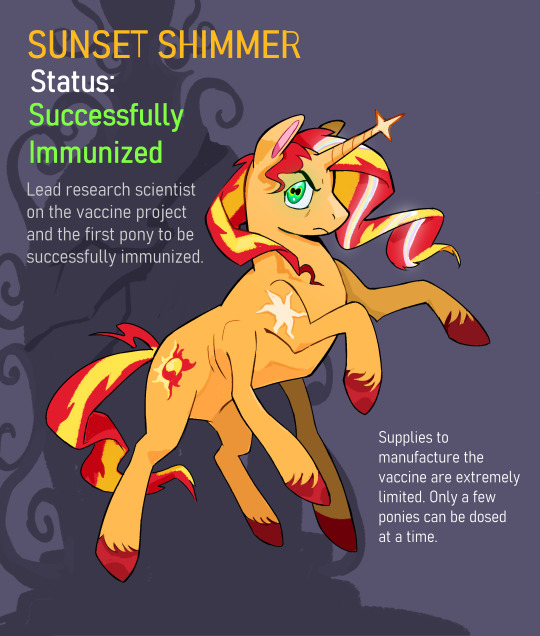
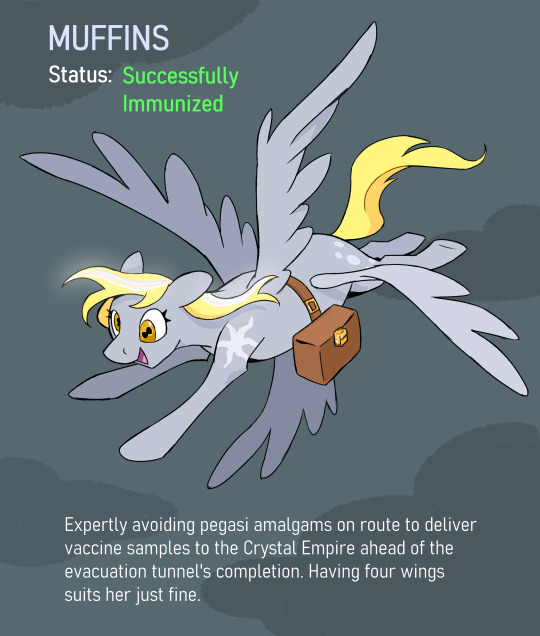
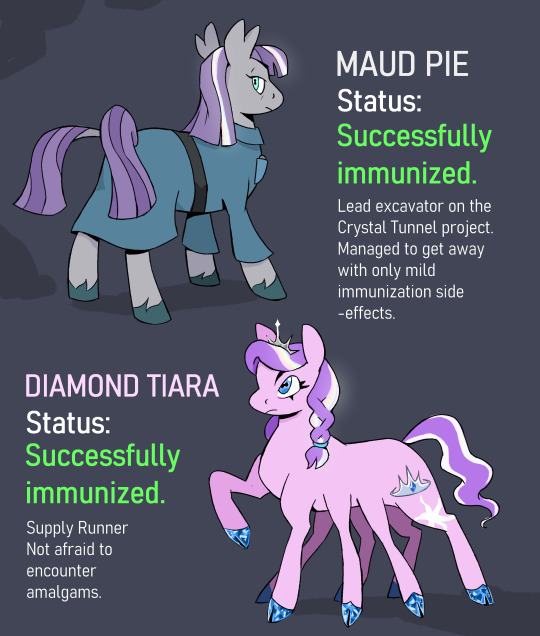

Part 4/5 of my MLP Infection AU!!
This was the part I was most excited for, I literally drew this whole thing just to explain my fan pony species lol
#mlp#mlp infection au#my little pony#mlp horror#mlp fim#sunset shimmer#zecora#This whole time I was like I have to get through this. to draw MONSTER PONIES#Sleigh ponies can have anywhere from 4-8 legs#Also can have doubled ears and double or even triple tails#They also have the split pupils and a rainbow hair streak#Unicorns can get split horns and pegasi (or alicorns) can get multiple wings#be rough if you end up with an uneven number. LOL#No rougher than eating meat for the rest of your life when you were previously a grass-eating horse though#I tried coming up w cool name for the vaccine so its HPE as in “Hope”
4K notes
·
View notes
Text

Doodles of my favorite horses on cave walls!
#himorenart#digital art#illustration#sketches#horse art#ancient horses#cave art#cave painting inspired#paleoart#what if i printed these on shrinky dinks and made horse earrings???
3K notes
·
View notes
Text





Only the finest Jacob horse earrings
#drawfee brainrot#drawfee show#drawfee fanart#drawfee#jacob horse#jacob andrews#karina farek#nathan yaffe#julia lepetit#art#artwork#artists on tumblr#polymer clay#clay art#clay sculpting#clay earrings#clay
889 notes
·
View notes
Text

Let’s talk about jockeys, jockeys are great. In his youth Sandy Hawley (Canadian, shown here in 1970s) was that unusual thing of being a good-looking male jockey who was also successful at horse racing. Most jockeys necessarily crackle with powerful short king energy, but young Hawley also understood about having interesting hair.






A nice thing is when famous jockeys are still alive and relatively uninjured. He is still alive and active in horse stuff, along with his current wife, Kaoru Tsuchiya, who was the first female jockey to race in Japan.


This is nice in a sport that is risky, tense and hard on jockeys.
#horse racing is a totally normal sport in which the people riding the horses have this awful time#most legendary jockeys are just like: emerged from womb aged 12 smoking a cigarette#immediately began falling off horses. died several times. made entirely out of titanium.#divorced three times and had fifteen fingers and an ear eaten by horses (spat out fingers and ate them again)#crushed to death in a bar fight. weighed 65 pounds. lived entirely on alcohol and a single grape.#survived by 17 children all jockeys.#absolutely hated horses and died instantly after being removed from them.#anyway! sandy hawley! alive and a little bit normal!#🤏#🏇
725 notes
·
View notes
Text

マンハッタンカフェ by もちき
#Uma Musume Pretty Derby#Uma Musume#Manhattan Cafe#Black Hair#Brown Eyes#Long Hair#Horse Girl#Horse Ears#Horse Tail#Skirt
38 notes
·
View notes
Note
Ok ok hear me out: it could end in tragedy,, AND have a happy ending. The attempt(s) on Machete’s life force him to flee, he doesn’t even have the chance to find Vasco. Cue gay longing for at least a few years while Machete despairs over the loss of his love, his life, his status. He and Vasco only reunite (again) in their later years. Their relationship is forever flavored with loss and loneliness, but that only means they savor every moment that much more
I also I would like to see them as old men. Vasco would be so droopy :)
You gave me such old dog brainworms.
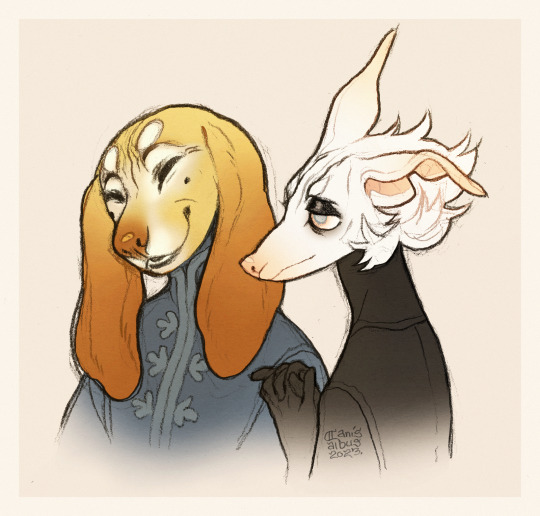
#Vasco would go white and gray in the face like an old golden retriever and get wrinklier#his golden fur would get shaggy and gradually lose it's shine#at some point he wouldn't be allowed to ride horses anymore which would upset him greatly#he'd get rheumatism and bad back and his hearing would worsen but he'd be an active and jolly type of grandpa#Machete would mellow out considerably if he managed to retire#I'd like to believe he'd be able to find some sort of inner peace in his later years#even in his prime his eyesight was bad and he spent his entire life fearing going blind so if he eventually got cataracts and lost most of#his remaining vision he'd probably be relatively fine with it as it was something he knew to expect#and he would have Vasco to look after him#his left ear had trouble staying upright when he was a pup so it would be kind of funny if it started drooping again#answered#anonymous#Vasco#Machete#own art#own characters#this isn't canon or anything I'm just musing
3K notes
·
View notes
Text
Shieldmaiden of Rohan, and Lady of Ithilien; Warrior and Healer
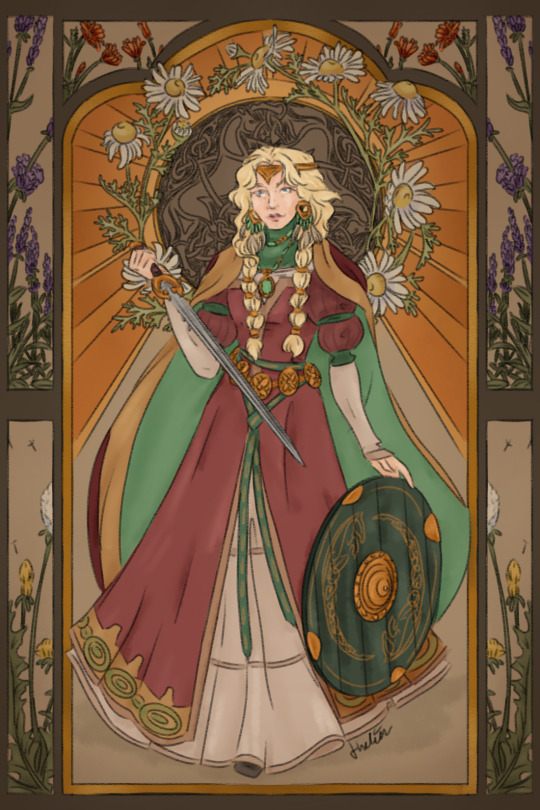
Chamomile: Chamomile helps to improve sleep, reduce anxiety, hay fever, inflammation, muscle spasms, wounds, ulcers, digestive disorders, and rheumatic pain - Chamomile symbolizes joy, positivity, peace, grace, and good luck.
Calendula: Calendula treats burns, bruises, and cuts - Calendula symbolizes endurance (due to its long bloom time), joy, remembrance, and grief.
Lavender: Lavender helps with sleep, treats skin blemishes, relieves pain, reduces blood pressure, combats fungus growth, and promotes hair growth; Lavender symbolizes purity, devotion, serenity, and grace - the color purple is the color of royalty, elegance, refinement and luxury.
Taraxacum (dandelion): Taraxacum leaves are used to stimulate the appetit, help digestion, and help the immune system - Taraxacum symbolizes hope, strength, and transformation.
Eowyn lived in Ithilien with Faramir, who had been declared ruling Prince of the land, after the war of the ring, and dwelt together in the hills of Emyn Arnen, where she was known as both the Lady of Ithilien and Emyn Arnen, as well as Shieldmaiden of Rohan, and shield arm.
#tolkien#jrr tolkien#lotr#lord of the rings#eowyn#dernhelm#rohan#tolkien art#lotr art#also tolkien said that she kept her friendship with merry even after he became master of buckland#i also think a lot about how its really cute he became a knight of rohan and i like to think she was the one doing it#meriadoc brandybuck you are here by a knight of rohan#i love it okay#i should make a faramir one too#my art#digital art#last note the longinsh hair in her earrings are supposed to be horse hair
2K notes
·
View notes
Text






2 notes
·
View notes
Text
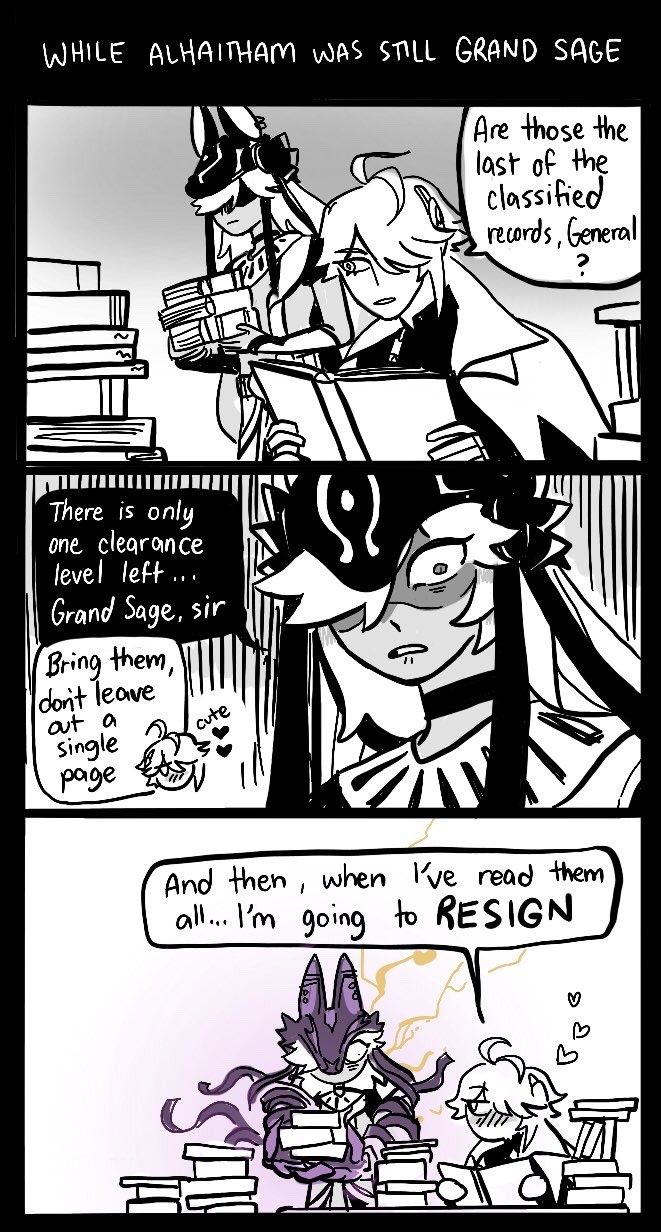
pictured: little boy on the playground pulling on his crush’s pigtails
#haino#cytham#alhaitham really said if its about cyno im in#his commitment to putting on horse blinders any time cyno is mentioned in passing is commendable#they should give him another raise#loved hearing about the late nights in the secret records room playing jump rope with cynos patience#very happy to have predicted haithams singular fixation on the temple of silence#the spirit in cynos ear whispering if you dont kill him i will#haitham peeking over his book like is he looking at me is he thinking about me
1K notes
·
View notes
Text

This fine centaur walks up to you and calls you a hero please give him information about goings on wyd 🤭
194 notes
·
View notes